
Description
American Civil War: Main Events and Key Figures
Timeline of Main Events:
Pre-War Period:
- 1845-1860: The U.S. Army engages in various activities on the Western frontier, including subduing American Indian tribes, exploring and governing new territories, and maintaining peace. They also support national development through mapping and engineering projects and undertake steps toward modernization. Officers gain experience in leadership and battle during the Mexican War and in the West.
1861: The War Begins
- April 1861: Battle of Fort Sumter, South Carolina – Marks the opening clashes of the Civil War.
- July 21, 1861: Battle of First Bull Run (Manassas), Virginia – The first major land battle of the war, resulting in a Confederate victory and highlighting the inexperience of both sides.
- August 10, 1861: Battle of Wilson’s Creek, Missouri – A significant early battle in the Trans-Mississippi Theater.
- October 20, 1861: Battle of Ball’s Bluff, Virginia – A Union military disaster resulting from a poorly executed raid.
- Late 1861: Federal military operations begin along the Atlantic coast as part of a broader strategy to strangle the Confederacy.
- Late 1861: The Lincoln administration focuses on maintaining control of the Far West, initiating conflict in the Trans-Mississippi Theater.
- Late 1861: Initial clashes and campaigns occur in the Western Theater.
1862: Key Campaigns and Turning Points
- Early 1862: Battles of Mill Springs, Kentucky; Forts Henry and Donelson, Tennessee – Union victories in the Western Theater.
- March 1862: Battle of Pea Ridge, Arkansas – A significant battle in the Trans-Mississippi Theater.
- April 6-7, 1862: Battle of Shiloh, Tennessee – A major battle in the Western Theater with heavy casualties on both sides.
- March-August 1862: The Virginia Campaigns – Includes battles such as Malvern Hill, Glendale, Gaines’ Mill, Mechanicsville, and Second Bull Run (August 29-30). These campaigns see changes in Union command and direction from President Lincoln and Secretary Stanton.
- August-September 1862: Confederate offensives northward, including Robert E. Lee’s invasion of Maryland, Van Dorn and Price moving into Tennessee, and Bragg and Kirby Smith advancing into Kentucky. This period is identified as a major turning point.
- September 17, 1862: Battle of Antietam (Sharpsburg), Maryland – The bloodiest single day in American history, a crucial turning point in the Eastern Theater.
- October 8, 1862: Battle of Perryville, Kentucky – A significant battle in the Western Theater, part of the Confederate counteroffensive. By mid-October, Union forces regain strategic and operational advantage, marking another turning point.
- Late 1862: Battles of Corinth and Iuka, Mississippi; Stones River, Tennessee (Western Theater).
- November 1862 – July 1863: The Vicksburg Campaign – Union efforts to gain control of the Mississippi River.
1863: Pivotal Years
- January-May 1863: The Chancellorsville Campaign, Virginia – A Confederate victory despite being outnumbered, marked by the death of Stonewall Jackson.
- June-July 1863: The Gettysburg Campaign, Pennsylvania – Culminating in the Battle of Gettysburg (July 1-3), a major turning point in the war and a Union victory.
- August-September 1863: The Chickamauga Campaign and Battle, Georgia – A Confederate victory in a hard-fought battle for control of Chattanooga.
- November 1863: Battles around Chattanooga, Tennessee – Union forces secure victory, gaining control of the city and driving Confederates south.
1864: The Tide Turns Further
- February-December 1864: Campaigns in Mississippi and Tennessee – Includes Sherman’s Meridian Expedition, Forrest’s operations (Fort Pillow Massacre, Brice’s Crossroads), and the Battles of Franklin and Nashville.
- March-November 1864: The Shenandoah Valley Campaign – Features Union defeats (New Market), destructive campaigns, Confederate offensives (Battle of Monocacy), and ultimately Union victories under Sheridan (Winchester, Cedar Creek), securing the Valley.
- May-June 1864: The Overland Campaign, Virginia – Grant and Lee clash in a series of bloody battles (Wilderness, Spotsylvania Court House, Yellow Tavern, North Anna River, Cold Harbor) as Grant pushes towards Richmond.
- May 1864: Battle of New Market, Virginia (Shenandoah Valley).
- May-September 1864: The Atlanta Campaign, Georgia – Sherman’s advance against Confederate forces under Johnston and Hood, culminating in the capture of Atlanta.
- September-December 1864: Price’s Missouri Expedition – A Confederate attempt to regain control of Missouri.
- November-December 1864: The Savannah Campaign (Sherman’s March to the Sea).
- 1864-1865: Siege of Petersburg, Virginia – Grant’s forces attempt to cut off Richmond’s supply lines.
- 1864-1865: Campaigns for Mobile, Alabama – Naval action at Mobile Bay (1864) followed by an Army siege and capture of the city (1865).
- October 19, 1864: Battle of Cedar Creek, Virginia (Shenandoah Valley) – Sheridan rallies Union forces to victory.
1865: The End of the War
- Early 1865: Sherman’s Carolinas Campaign.
- April 2, 1865: Lee’s lines at Petersburg collapse, forcing the evacuation of Richmond and Petersburg.
- April 9, 1865: General Robert E. Lee surrenders the Army of Northern Virginia to Lt. Gen. Ulysses S. Grant at Appomattox Court House, Virginia.
- April-May 1865: Continued Union operations, including raids in various Southern states and the Federal assault on Mobile, Alabama.
- May 1865: Capture of Confederate President Jefferson Davis.
- Spring 1865: Remaining Confederate military forces across the South surrender.
Throughout the War:
- Federal military operations along the Atlantic coast play a crucial role in strangling the Confederacy’s economy.
- The U.S. Army Medical Department provides service across the country, adapting and advancing medical practices.
Cast of Characters:
- Abraham Lincoln: President of the United States during the Civil War. His leadership guided the Union through the conflict, making key decisions regarding military strategy and leadership changes. He viewed the preservation of the Union as paramount.
- Edwin Stanton: United States Secretary of War during much of the Civil War. He worked closely with President Lincoln to organize and direct the Union war effort, assuming more direct control over military operations at times.
- Winfield Scott: Major General in the U.S. Army at the start of the war. He devised the “Anaconda Plan,” a broad strategy to suffocate the Confederacy through naval blockades and control of the Mississippi River.
- Ulysses S. Grant: Lieutenant General and later General-in-Chief of the Union Army. His aggressive leadership and strategic vision were crucial to the Union victory. He led key campaigns in the West and ultimately oversaw the final push against Lee in Virginia.
- George G. Meade: Major General in the Union Army who commanded the Army of the Potomac and led it to victory at the Battle of Gettysburg.
- Joseph Hooker: Major General in the Union Army who commanded the Army of the Potomac before Gettysburg. He suffered a significant defeat at the Battle of Chancellorsville.
- William T. Sherman: Major General in the Union Army known for his campaigns in the Western Theater, including the capture of Atlanta and his “March to the Sea,” which significantly damaged the Confederate infrastructure.
- Philip Sheridan: Major General in the Union Army who played a decisive role in the Shenandoah Valley Campaign in 1864 and was instrumental in blocking Lee’s retreat at Appomattox.
- David G. Farragut: Admiral in the U.S. Navy famous for his leadership in naval operations, including the Battle of Mobile Bay.
- Edward Canby: Major General in the Union Army who led the siege and capture of Mobile, Alabama, in 1865.
- Robert E. Lee: General commanding the Confederate Army of Northern Virginia. He was a highly respected military leader who led the Confederacy’s main army in the Eastern Theater until his surrender at Appomattox.
- Thomas J. “Stonewall” Jackson: Lieutenant General in the Confederate Army, a brilliant tactical commander under Robert E. Lee. He played key roles in many Confederate victories in the Eastern Theater before his death at the Battle of Chancellorsville.
- Braxton Bragg: General in the Confederate Army who commanded forces in the Western Theater, including at the Battle of Perryville and Chickamauga (where he was victorious).
- Edmund Kirby Smith: General in the Confederate Army who operated in the Western Theater, including the advance into Kentucky in 1862.
- Earl Van Dorn: Major General in the Confederate Army who operated in the Western Theater, involved in movements into Tennessee in 1862.
- Sterling Price: Major General in the Confederate Army who operated primarily in the Trans-Mississippi Theater, leading Price’s Missouri Expedition in 1864.
- Joseph E. Johnston: General in the Confederate Army who commanded the Army of Tennessee and opposed Sherman during the Atlanta Campaign before being replaced by Hood.
- John Bell Hood: General in the Confederate Army who replaced Johnston as commander of the Army of Tennessee during the Atlanta Campaign.
- Nathan Bedford Forrest: Major General in the Confederate Army, a renowned cavalry commander known for his effectiveness and controversial actions, including the Fort Pillow Massacre.
- Jubal Early: Lieutenant General in the Confederate Army who commanded forces in the Shenandoah Valley in 1864, launching an offensive that reached near Washington D.C.
- John C. Breckinridge: Confederate General who commanded forces at the Battle of New Market in the Shenandoah Valley.
- Franz Sigel: Major General in the Union Army who commanded forces at the Battle of New Market.
- Jefferson Davis: President of the Confederate States of America. His leadership guided the Confederacy throughout the war.
- George Stoneman: Major General in the Union Army who led cavalry raids in the later stages of the war.
- Edward E. Potter: Union General involved in raids in the South towards the end of the war.
- James H. Wilson: Major General in the Union Army who led cavalry raids in the final months of the war.
Civil War: U.S. Army Official History Volumes (1988-2019)
4,640 pages in 34 volumes. Civil War histories produced by Army historians and published between 1988 and 2019.
Volumes include:
The Regular Army Before the Civil War, 1845–1860 (2014)
The fifteen years that preceded the outbreak of the American Civil War were eventful ones for the U.S. Army. After invading and defeating Mexico, the Army dispersed across the vast Western frontier undertaking a myriad of duties. It subdued American Indian tribes, explored and governed new territories, and generally worked to maintain peace. At the same time, it supported national development through mapping and engineering projects, grew in size, and undertook important steps toward modernization. While these activities did not fully prepare the Army for the cataclysm that was to come, they did provide opportunities for officers to hone their leadership skills under trying conditions. Many of the men who would become generals during the Civil War first tasted battle as junior officers in Mexico and the American West.
The Civil War Begins: Opening Clashes, 1861 (2012)
The Civil War Begins: Opening Clashes, 1861 is the first in a series of campaign brochures commemorating our national sacrifices during the American Civil War. Author Jennifer Murray examines the successes and challenges of both the Union and the Confederate forces during the early days of the Civil War. Notable battles discussed include: Fort Sumter, South Carolina; Bull Run, Virginia; Wilson’s Creek, Missouri; Cape Hatteras, North Carolina; and Port Royal, South Carolina. This brochure includes six maps and three tables.
Battle of First Bull Run (2007)
Battle of First Bull Run is an account of the first major land battle of the Civil War, which took place on 21 July 1861. This staff ride guide explores a number of key elements, especially the inexperience of both the commanding officers in leading large numbers of troops in battle as well as their newly recruited and poorly trained volunteer soldiers. It also examines the naivety of both the Union and Confederacy and their unrealistic expectations of the conflict. The work illustrates numerous lessons from the battle at First Bull Run, including the dangers of not having a well-prepared and trained force at the onset of hostilities and the difficulties of launching offensive operations without proper preparation.
Battle of Ball’s Bluff (2001)
Battle of Ball’s Bluff is an account of the small raid on a suspected Confederate camp near Leesburg, Virginia, on 20 October 1861, which turned into a Union military disaster. Ted Ballard has crafted an engaging story, relying principally on contemporary after-action reports and on the sworn testimony of participants called before the congressional Joint Committee on the Conduct of the War investigating the Union defeats at First Bull Run and Ball’s Bluff. Although not in a class with Antietam and Gettysburg or other great Civil War clashes with respect to size or consequences, the Battle of Ball’s Bluff nevertheless provides important lessons in small-unit actions, leadership, tactical planning, and the role of courage and military professionalism under fire.
The Civil War on the Atlantic Coast, 1861–1865 (2015)
In the Civil War on the Atlantic Coast, 1861–1865, R. Scott Moore states that, over the course of four years of war, Federal military operations along the Atlantic coast played a key role in slowly strangling the Confederacy. Between 1862 and 1865, Southern cotton exports fell to just 5 percent of prewar levels. The number of vessels entering Confederate ports steadily decreased as the war went on. The broad strategy first envisioned by Maj. Gen. Winfield Scott and detailed by the Commission of Conference ultimately proved highly effective. Bit by bit the North closed off rebel commerce while keeping Southern coastal communities in a state of alarm that tied down the Confederacy’s own hard-pressed military manpower. Thus, despite their relatively few numbers and often forgotten efforts, the soldiers who served along the Atlantic coast played a crucial part in the outcome of the Civil War.
The Civil War in the Trans-Mississippi Theater, 1861–1865 (2015)
If the Civil War had a “forgotten theater,” it was the Trans-Mississippi West. Starting in 1861 with the Lincoln administration’s desire to maintain control of the far west, The Civil War in the Trans-Mississippi Theater, 1861–1865, covers battles in New Mexico, Missouri, Arkansas, Louisiana, and Texas, including Pea Ridge in March 1862 and Pleasant Hill in April 1864. The Red River Expedition and Price’s Raid are also covered. The narrative places these campaigns and battles in their strategic context to show how they contributed to the outcome of the war.
The Civil War in the Western Theater, 1862 (2014)
In The Civil War in the Western Theater, 1862, author Charles R. Bowery Jr. examines the campaigns and battles that occurred during 1862 in the vast region between the Appalachian Mountains in the east and the Mississippi River in the west, and from the Ohio River in the north to the Gulf of Mexico in the south. Notable battles discussed include Mill Springs, Kentucky; Forts Henry and Donelson, Tennessee; Shiloh, Tennessee; Perryville, Kentucky; Corinth and Iuka, Mississippi; and Stones River, Tennessee.
The Virginia Campaigns, March–August 1862 (2016)
The Virginia Campaigns, March–August 1862, by Christopher Kolakowski, covers key battles in the Commonwealth of Virginia including Malvern Hill, Glendale, Gaines’ Mill, Mechanicsville, and Second Bull Run. It also discusses the changes made in leadership of the Union command as President Abraham Lincoln and Secretary of War Edwin Stanton assumed direction of the war.
Battle of Perryville, 8 October 1862 (2005)
Abstract: In August and September 1862 Confederate armies were on the move northward. Robert E. Lee was invading Maryland, Earl Van Dorn and Sterling Price were moving into Tennessee, and Braxton Bragg and Edmund Kirby Smith were advancing into Kentucky. James McPherson, in his acclaimed Battle Cry of Freedom, cites this period as the first of the four major turning points of the American Civil War. The Confederate counteroffensive defeated Union hopes to end the war in 1862. However, by mid-October, hard on the heels of the broad Confederate advance the Union forces had regained the strategic and operational advantage, cited by McPherson as the second turning point of the war. Union victories at Antietam in the east and Perryville in the west carried significant weight in determining the final outcome of the conflict.
The Vicksburg Campaign, November 1862–July 1863 (2013)
The Vicksburg Campaign, November 1862-July 1863 continues the series of campaign brochures commemorating our national sacrifices during the American Civil War. Author Christopher R. Gabel examines the operations for the control of Vicksburg, Mississippi. President Abraham Lincoln called Vicksburg “the key,” and indeed it was as control of the Mississippi River depended entirely on the taking of this Confederate stronghold. This brochure includes five maps and fifteen illustrations.
The Civil War in the West, 1863 (2016)
The Civil War in the West, 1863, by Andrew N. Morris, is the latest addition to the Center of Military History’s U.S. Army Campaigns of the Civil War series. In 1863, Union and Confederate forces fought for control of Chattanooga, a key rail center. The Confederates were victorious at nearby Chickamauga in September. However, renewed fighting in Chattanooga that November provided Union troops a victory, control of the city, and drove the Confederates south into Georgia. The Union success left its armies poised to invade the Deep South the following year.
The Gettysburg Campaign, June–July 1863 (2013)
The Gettysburg Campaign, June-July 1863 continues the series of campaign brochures commemorating our national sacrifices during the American Civil War. Authors Carol Reardon and Tom Vossler examine the operations that culminated in the pivotal three-day Battle of Gettysburg, pitting the Union Army of the Potomac under Maj. Gen. George G. Meade against the Confederate Army of Northern Virginia under General Robert E. Lee. This brochure includes seven maps and seventeen illustrations.
The Chancellorsville Campaign, January–May (1863)
In the Chancellorsville Campaign, January–May 1863, author Bradford Wineman examines the battle of Chancellorsville in which a powerful Union Army, under Maj. Gen. Joseph Hooker, was pitted against a smaller but well-led Confederate force under General Robert E. Lee. Hooker planned a bold flanking maneuver to secure a Union victory, crush the rebel army, and open the way for a march toward Richmond, Virginia, the Confederate capital. He anticipated a glorious victory for his Federal troops.
In the end it was Lee, and his chief lieutenant, Maj. Gen. Thomas J. “Stonewall” Jackson, who achieved what many historians have called the South’s greatest victory during the Civil War. Once Hooker had maneuvered the bulk of his forces over the Rappahannock River the Union commander gathered his troops into a defensive position at Chancellorsville and waited for Lee to attack. Lee seized the initiative, made several risky tactical moves, and drove the Federals from the field after three days of intense fighting. Only the death of the “Stonewall” Jackson tarnished Lee’s crowning victory
The Atlanta and Savannah Campaigns, 1864
The Atlanta and Savannah Campaigns, 1864, author J. Britt McCarley covers the military operations in northern Georgia involving the Union army group led by Maj. Gen. William T. Sherman and the Confederate Army of Tennessee commanded by Generals Joseph E. Johnston and John Bell Hood. The Atlanta Campaign consisted of numerous engagements, including the Battles of Resaca, Kennesaw Mountain, Peachtree Creek, Atlanta, Ezra Church, and Jonesboro. The campaign ended with Sherman’s capture of Atlanta, Georgia, the Confederacy’s largest transportation and manufacturing center in the Deep South. McCarley’s superb account concludes with an examination of the Savannah Campaign, more popularly known as Sherman’s March to the Sea.
Campaigns in Mississippi and Tennessee, February–December 1864 (2014)
The Campaigns in Mississippi and Tennessee, February–December 1864, by Derek W. Frisby, begins with an examination of Maj. Gen. William T. Sherman’s Meridian Expedition, often called a dress rehearsal for the more famous March to the Sea. He then follows with an account of the operations of Confederate cavalry commander Maj. Gen. Nathan Bedford Forrest, including the notorious Fort Pillow Massacre and the brilliantly executed Battle of Brice’s Crossroads. Frisby concludes his excellent study with a narrative of the pivotal Battles of Franklin and Nashville.
The Shenandoah Valley Campaign, March–November 1864 (2014)
The Shenandoah Valley Campaign, March–November 1864, by Raymond K. Bluhm Jr., covers Union and Confederate military operations in the Shenandoah Valley region of southwestern Virginia, and in Maryland and Washington, D.C., during the last full year of the conflict. Bluhm describes the Union advance in the Shenandoah Valley in May 1864 that led to the Federal defeat at the Battle of New Market, Maj. Gen. David Hunter’s destructive campaign later that spring culminating in his retreat from Lynchburg, and Maj. Gen. Jubal Early’s subsequent Confederate offensive against the U.S. capital, resulting in the Battle of Monocacy in July. Also covered is Maj. Gen. Philip Sheridan’s tenure in command of Union forces in the Valley and his two key victories at Winchester and Cedar Creek, in which rebel forces under Early were defeated, giving Union forces control over the region by November 1864
The Overland Campaign, 4 May–15 June 1864 (2014)
In the spring of 1864, the Civil War’s two legendary military leaders, Ulysses S. Grant and Robert E. Lee, confronted each other on the battlefield for the first time. Part of the U.S. Army’s commemorative series of the Civil War, The Overland Campaign, 4 May–15 June 1864, by David W. Hogan, Jr. tells the story of the clash of these two titans through the burning scrub brush of the Wilderness, the bitter struggle for the Bloody Angle at Spotsylvania Court House, the cavalry encounter at Yellow Tavern, the maneuvering along the North Anna River, and the tragedy of Cold Harbor. It also provides analysis in light of the latest scholarship. This brochure includes eight maps and twenty-two illustrations.
Overland Campaign, Virginia, 4 May to 15 June 1864 A Study in Operational-Level Command (2009)
This Second Edition of the Staff Ride Handbook for the Overland Campaign, Virginia, 4 May to 15 June 1864, is an update to the tenth study in the Combat Studies Institute’s (CSI) Staff Ride Handbook series. The original handbook, prepared by Dr. Curtis S. King, Dr. William Glenn Robertson, and LTC Steven E. Clay (US Army, Retired), analyzed Lieutenant General Ulysses S. Grant’s 1864 Overland Campaign from the crossing of the Rapidan River on 4 May to the initiation of the crossing of the James River on 15 June. This new edition carries the story across the James and encompasses the initial assaults on Petersburg as well. Unlike many of CSI’s previous handbooks, this handbook focuses on the operational level of war. Even so, it provides a heavy dose of tactical analysis, thereby making this ride a superb tool for developing Army leaders at almost all levels.
The Petersburg and Appomattox Campaigns, 1864–1865 (2015)
In the Civil War’s last year, two great adversaries squared off in central Virginia in a series of battles that eventually determined the struggle’s outcome. After a month of battles from the Wilderness to Cold Harbor in May and June, 1864, Union Commander in Chief Lt. Gen. Ulysses S. Grant was frustrated in his headstrong attempts to batter the Confederate forces under General Robert E. Lee and bring them to open battle. Seeking to sidestep Lee’s army and attack Richmond, the Confederacy’s capital city, Grant moved south to cross the James River and cut the rebel army’s supply lines at Petersburg, Virginia, where several key railroads met to form a crucial logistical center. Lee, however, reacted in time to block the Union strike at Petersburg. A ten month siege ensued as Grant sought to pry Lee out of Petersburg with flanking maneuvers, and the Confederates desperately defended the city and Richmond.
Lee’s lines finally collapsed on 2 April 1865 after a powerful Federal attack on his right, which forced the rebels to evacuate Richmond and Petersburg that night. In a seven-day retreat with Grant’s Union forces closely behind them, the Confederates marched west to obtain supplies and join other rebel troops in North Carolina. Grant’s forces, particularly the cavalrymen under Maj. Gen. Phil Sheridan, were able to get in front of Lee’s column and block his progress at a small courthouse village called Appomattox. With no chance of victory or even escape left to him, Lee surrendered his forces to Grant on 9 April 1865.
The Civil War Ends, 1865 (2015)
Many people mistakenly believe that the American Civil War ended when General Robert E. Lee’s Army of Northern Virginia evacuated the Confederate capital of Richmond, Virginia, after a long siege and surrendered to his Union counterpart, Lt. Gen. Ulysses S. Grant, at Appomattox Court House on 9 April 1865. Although the capitulation of the South’s premier field army foreshadowed the Confederacy’s ultimate demise, important operations took place concurrent with the struggle between Grant and Lee operations which continued into May 1865. This brochure examines some of these events, starting with Maj. Gen. William T. Sherman’s Carolinas Campaign, and continuing with several raids led by Union Generals George Stoneman, Edward E. Potter, and James H. Wilson. Other operations covered include the Federal assault on Mobile, Alabama, and the capture of Confederate President Jefferson Davis. The rest of the brochure describes how the remaining Confederate military forces from North Carolina to Texas laid down their arms in the spring of 1865.
The Army Medical Department, 1818-1865
Medical activities in the U.S. Army from the inception of the modern Army Medical Department through the Civil War, with emphasis both on medical service in the far West and on clinical, scientific, and organizational advances.
Staff Ride Guide Battle of Antietam
The Battle of Antietam was a crucial turning point in the American Civil War. This staff ride guide examines the Maryland Campaign and Battle of Antietam, the bloodiest day in American history. On 17 September 1862, the Army of the Potomac met the Army of Northern Virginia on the rolling farmlands around Sharpsburg, Maryland. While General Lee sought to bring the war to the North and “liberate” Maryland, General McClellan, having gained important intelligence, would endeavor to defeat Lee and reverse the momentum of several Union losses. Ted Ballard has once again crafted a definitive battle guide drawing on the Official Records of the War of the Rebellion. Though neither the Union nor the Confederate side gained the decisive victory both desired, the battle provides many lessons in command and control, communications, intelligence, technology versus tactics, and the “fog of war.”
The Battle of Cedar Creek: Self-Guided Tour (1990)
Union General Philip H. Sheridan rallied his men to turn defeat into victory on 19 October 1864.
American Military History Volume 1 – The United States Army and the Forging of Nation, 1775-1917
The Battle of New Market: Self-Guided Tour (1988)
The battle between Confederate units under General John C. Breckinridge and Union forces commanded by Maj. Gen. Franz Sigel in the Shenandoah Valley, May 1864.
The Battle of Second Manassas: Self-Guided Tour (1991)
The Battle of Second Manassas, prepared as a self-guided tour, is intended to help today’s soldiers study the American battlefields of the past not only to better understand the complexities and inevitable pressures of warfare but also to sharpen their knowledge of the art of war and their craft. The contest around Groveton, Virginia, on 29-30 August 1862 was characterized by complex maneuvers and fighting over the same areas at several different times. New units funneled into the battle throughout its course, while others were rushed from one point to another as the action shifted. This lack of order is a reflection of the high level of confusion experienced at the time. The courage of the men on both sides was exemplary, but technology has overtaken the tactics they used. Nevertheless, the lessons in leadership, command, the use of intelligence, and the performance of men under stress shown by this battle have a lasting value.
Centuries of Service: The U.S. Army, 1775-2005 (2005)
Centuries of Service is the right title for this readable and informative brochure. Since 1775 the United States has grown from a loosely organized confederation of thirteen English colonies to a superpower whose influence reaches around the globe. Over the course of American history, as David W. Hogan Jr. writes, one can truly say of the Army: “When it was needed, it was there,” first as the shield of the Republic during its vulnerable early years and later as a means to project power in defense of American interests worldwide. Hogan examines the full range of the Army’s contributions: its vital role in the growth and development of the nation, its dedicated efforts to preserve the Union during the Civil War, and its defense of the United States against external threats through to modern day. Because of the ready availability of disciplined and trained personnel, the Army has also been involved in a wide array of nonmilitary assistance, intervention tasks, such as internal improvements, natural disaster relief, economic assistance, domestic order, and a host of other contingencies. The Army answered the call and continues to do so.
Commanding Generals Chiefs of Staff 1775–2013 Portraits & Biographical Sketches of the United States Army’s Senior Officer (2013)
Commanding Generals and Chiefs of Staff, 1775-2005, first published in 1983 and periodically updated while preserving its original purpose and scope, continues the institutional history of the present-day Office of the Chief of Staff of the Army followed by side-by-side presentations of the biography and official portrait of the Army’s senior officer in the line of succession. By and large the commanding generals and chiefs of staff leading the Army in peace and war moved in a competitive environment with evolving responsibilities in trying circumstances, their rise through the levels of leadership to the pinnacle of their profession revealing both striking parallels and fascinating contrasts. Interesting, informative, and inspiring, Commanding Generals and Chiefs of Staff honors these officers for their contributions as eminent leaders in the history of the Army and in the history of the nation. It is a valuable reference source for those interested in generalship at the highest levels. Although the complexity of technology and staff organization has increased radically over time, the essential elements of leadership remain unchanged.
Battlefield Atlas of Price’s Missouri Expedition of 1864 (2016)
Abstract: The genesis for the publication of Battlefield Atlas of Price’s Missouri Expedition of 1864 goes back to 1985. Dr. Jerold E. Brown first developed the Battle of Westport as a staff ride for the Combat Studies Institute’s (CSI) curriculum at the US Army Command and General Staff College (CGSC). The study of the Battle of Westport, Missouri, provided the college with the opportunity to visit a nearby Civil War battlefield. Dr. Brown also used the Westport staff ride as a “train the trainer” exercise in what later became the Military History Instruction Course (MHIC) to teach staff ride methodology. Subsequent CSI instructors expanded Dr. Brown’s original work into a full-length staff ride. Most notable were Dr. Curtis S. King and Mr. Gary W. Linhart, both CSI Historians. They formalized the instructor notes into a standardized staff ride walk book (instructor guide) and widened the scope of both the preliminary study and the field study portions. The new preliminary study provided an overview of all of Price’s Missouri Expedition of 1864 (7 September 1864 to 28 November 1864) and the revised field study focused on the three-day battle of Westport (21-23 October 1864). Over time, the Westport staff ride became very popular with ROTC programs, Reserve Component units, and the Active duty Army from the surrounding region.
Staff Ride Handbook for the Battle of Chickamauga, 18—20 September 1863 (1992)
The campaign and Battle of Chickamauga, August-September 1863, is an excellent vehicle for a Staff Ride. Because of the size of the forces involved and the difficulty of the terrain encountered, it represents an opportunity to raise many challenging teaching points relevant to today’s officer. Second, the nation has wisely preserved most of the primary battle area in the Chickamauga and Chattanooga National Military Park and has marked most unit positions for detailed study by visitors.
Operational Art and the Campaigns for Mobile, 1864–65 (2019)
Dr. Dan Jordan’s Staff Ride Handbook for the Mobile Bay campaign covers both the Navy-led action at the mouth of the bay in 1864 as well as the Army-led siege of the city itself in 1865, demonstrating the importance of the interoperability of forces operating in different domains to successfully enable joint forces to create decisive effects. The campaign highlights actions of ground forces in both supporting and supported roles and the importance of cross-domain fires to effect maneuver and achieve victory. The handbook covers ADM David G. Farragut’s famous action at the mouth of Mobile Bay and MG Edward Canby’s intricate plan of maneuver to place his forces in position to force the evacuation of Mobile, one of the Confederacy’s last major ports. This handbook is designed for either a single or multi-day staff ride and is intended for all members of the joint force.
Staff Ride Handbook for The Battle of Shiloh, 6-7 April 1862 (2004)
Abstract: Since the early 20th century the US Army has used Civil War and other battlefields as “outdoor classrooms” in which to educate and train its officers. Employing a methodology developed at Fort Leavenworth, Kansas, in 1906, both the U.S. Army Command and General Staff College and US Army War College conducted numerous battlefield staff rides to prepare officers for duties in both war and peace. Often interrupted by the exigencies of the nation’s wars, the tradition was renewed and reinvigorated at Fort Leavenworth in the early 1980s. Since 1983 the Leavenworth Staff Ride Team has guided military students on battlefields around the world.
Staff Ride Handbook for The Vicksburg Campaign, December 1862-July 1863 (2001)
Abstract: The Vicksburg campaign of 1862-63 is an effective vehicle for a Staff Ride. It raises a variety of teaching points, at both the operational and tactical levels, that are relevant to today’s officers. Several different types of combat occurred in the course of the campaign. Inaddition, the campaign featured prominent participation by the Navy, thus raising a joint dimension. It also offers examples of combat support and combat service support activities, most notably military engineering and logistics.
The Wilson’s Creek Staff Ride and Battlefield Tour (2001)
Abstract: Armies of the North and South fought the Rattle of Wilson’s Creek about ten miles southwest of Springfield, Missouri, on Saturday, 10 August 1861. Like most battles, Wilson’s Creek provides fertile ground for studying military art and science. It is particularly useful for examining the dynamics of battle and the effect of personalities on the action. While the action at Wilson’s Creek was small compared to that at Gettysburg or Chickamauga, it remains significant and useful to students of military history.
Staff Guide to Battle of First Bull Run (2007)
A First Bull Run staff ride can offer significant military lessons. Revisiting this battle through the “eyes” of the men who were there, both leaders and rank-and-file soldiers, allows one insights into decision making under pressure and the human condition during battle. The campaign contains many lessons in command and control, communications, intelligence, logistics, the accommodation of advances in weapon technology, and mobilization in the absence of universal military training. First Bull Run was a first battle—a major engagement after a prolonged period of peace. For some it constitutes a metaphor of the price paid for military unpreparedness. Hopefully, this volume will prove a useful tool for those conducting a staff ride to First Bull Run.

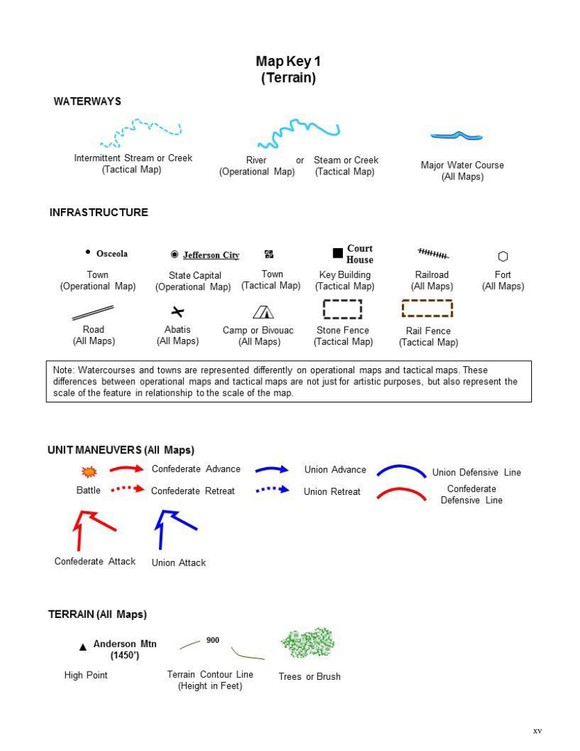
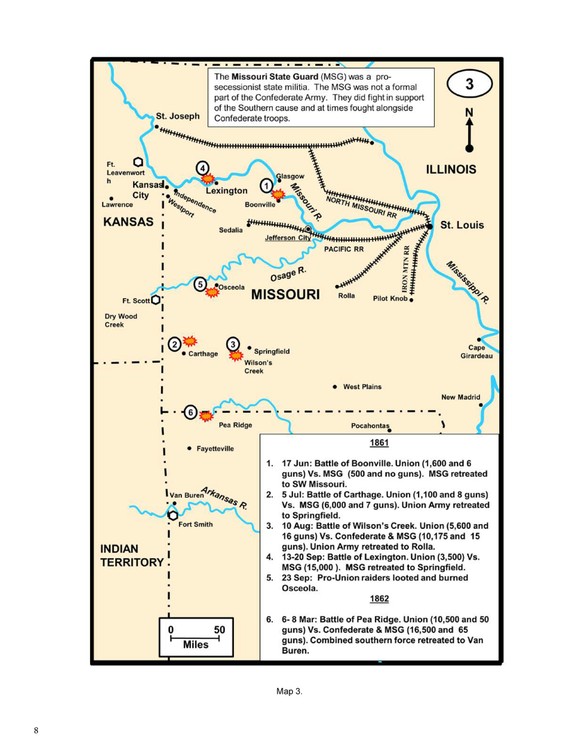
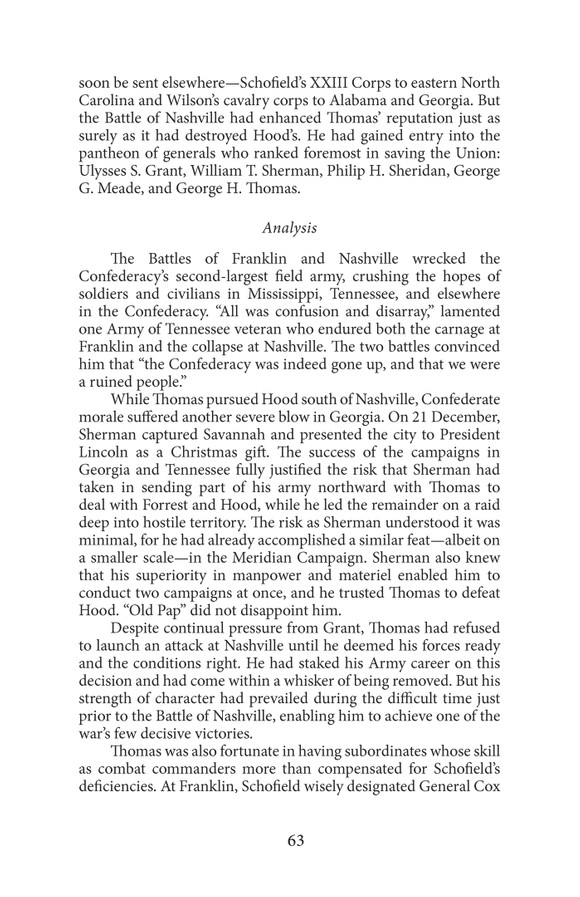

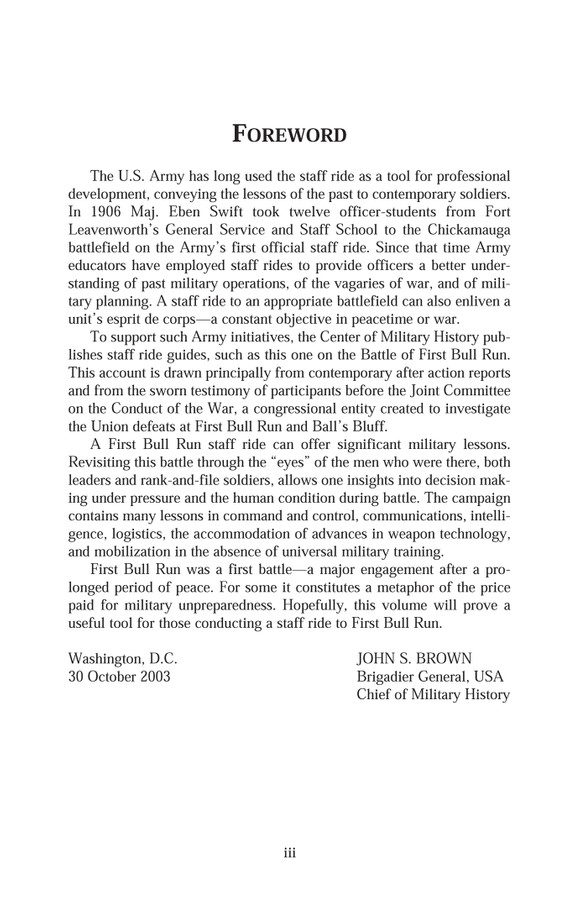

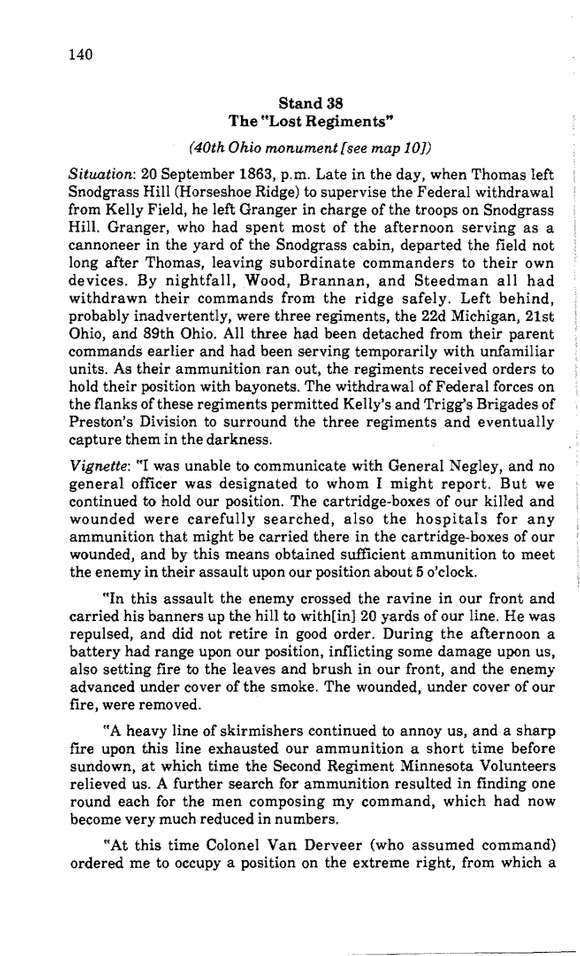


Related products
-
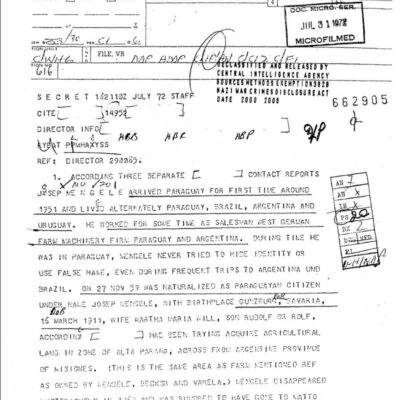

Josef Mengele CIA Files
$19.50 Add to Cart -
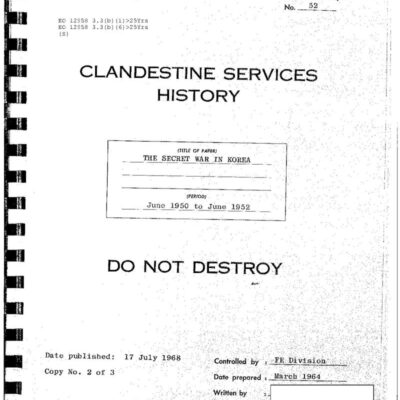
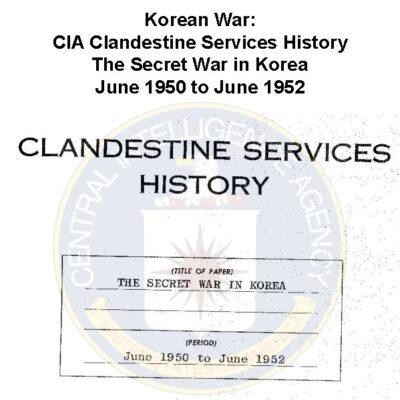
Korean War: CIA Covert Operations History – The Secret Conflict in Korea
$3.94 Add to Cart -


World War II: Interrogation Report and Diary of Margarete Himmler, Wife of Heinrich Himmler
$3.94 Add to Cart -

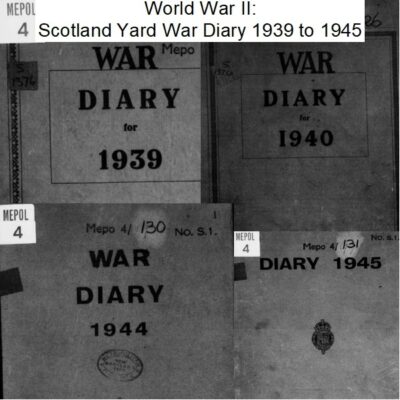
World War II: Scotland Yard War Diary from 1939 to 1945
$3.94 Add to Cart